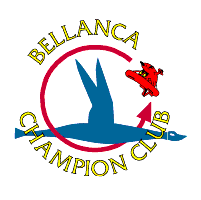The Service Letter (87a) calls out EC1375 or EC1239. The mil qualification (8802f) is a good start but does anyone know the part number sealer that the factory is using?
Additionally, I have read somewhere that the factory dipped the wings in a preservative solution. Anyone know what that preservative that might be? I noticed that a wood framed sports car builder also dipped their wood frame into a preservative solution.
http://www.youtube.com/watch?v=MLS7p0fGhiM
Regards,
Tony
Rhunter wrote:Bellanca Engineering Report BER 838 addresses spar butt checking and cracking. I had some checking in my spars but all were within limits. I don't have the BER handy right now but I know it allows aft spars to be cracked out to the second bolt hole in the areas between the hinge straps. The forward spar may not have any cracks in the area between the lower hinge straps. I think it may allow a crack out to the first bolt hole in the area between the upper hinge straps on the forward spar but check the BER- I can't remember that part for certain. BER 838 can be obtained from Alexandria Aircraft and applies to all Cruisair, Cruisemaster, and Viking series aircraft. Alexandria says to check the depth of the cracks with a piece of .020" safety wire. I went one better and used a tiny, extremely thin blade of Buffalo Grass that grows at my airport. My deepest crack was 1 1/16", which is well within limits. The BER says to pack the cracks with an approved, waterproof glue, which would be Resorcinol. After that the BER says to seal the spar butts with a type of 3M sealant that is apparently no longer available. I think it was EC-760 or something like that. The sealant that Alexandria uses is of a type conforming to MIL-PRF-8802F. The same aerospace sealant used to seal integral fuel cells and windows on pressurized aircraft. It works well but it is opaque and I wanted to be able to see my spar butts for future inspection so I just coated them really well with three coats of full-strength Stits Epoxy Varnish. They survived this past summer without any cracks and this is South Texas! I don't have them installed yet so I get a good look at them every day. Oh, and the wings can get really heavy if the gear are installed! With gear removed two people can easily handle one wing.
Additionally, I have read somewhere that the factory dipped the wings in a preservative solution. Anyone know what that preservative that might be? I noticed that a wood framed sports car builder also dipped their wood frame into a preservative solution.
http://www.youtube.com/watch?v=MLS7p0fGhiM
Regards,
Tony
Rhunter wrote:Bellanca Engineering Report BER 838 addresses spar butt checking and cracking. I had some checking in my spars but all were within limits. I don't have the BER handy right now but I know it allows aft spars to be cracked out to the second bolt hole in the areas between the hinge straps. The forward spar may not have any cracks in the area between the lower hinge straps. I think it may allow a crack out to the first bolt hole in the area between the upper hinge straps on the forward spar but check the BER- I can't remember that part for certain. BER 838 can be obtained from Alexandria Aircraft and applies to all Cruisair, Cruisemaster, and Viking series aircraft. Alexandria says to check the depth of the cracks with a piece of .020" safety wire. I went one better and used a tiny, extremely thin blade of Buffalo Grass that grows at my airport. My deepest crack was 1 1/16", which is well within limits. The BER says to pack the cracks with an approved, waterproof glue, which would be Resorcinol. After that the BER says to seal the spar butts with a type of 3M sealant that is apparently no longer available. I think it was EC-760 or something like that. The sealant that Alexandria uses is of a type conforming to MIL-PRF-8802F. The same aerospace sealant used to seal integral fuel cells and windows on pressurized aircraft. It works well but it is opaque and I wanted to be able to see my spar butts for future inspection so I just coated them really well with three coats of full-strength Stits Epoxy Varnish. They survived this past summer without any cracks and this is South Texas! I don't have them installed yet so I get a good look at them every day. Oh, and the wings can get really heavy if the gear are installed! With gear removed two people can easily handle one wing.
